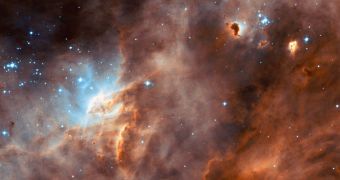The most recent scientific findings appear to paint a new portrait of how life appeared and developed in our galaxy. The data indicate that it originated inside massive molecular clouds spread throughout the Milky Way, more than 10 billion years ago.
This means that life began developing when the Universe was just a fraction of its current age, of 13.7 billion years. If this scenario turns out to be true, then it would explain how the earliest building blocks of life had sufficient time to develop.
Experts in genetics, microbiology, astrobiology, and astrophysics now support this idea, based on the latest findings in their respective fields. They explain that molecular clouds were most likely the point of origin for the first molecules that would go on to underlie life as we know it.
Recently, an astronomer pieced together the latest findings in what is now a very controversial theory on the origins of life. He proposes that it appeared in the Universe long before our planet was formed.
His reasoning is simple and straightforward, and compelling at times. According to estimates, several billions or trillions of galaxies exist in the known Universe, each of them containing billions of stars.
Over the history of the Universe, many trillions of these stars blew up in supernova events, and created stellar and nebular clouds that were seeded with all the major ingredients needed for life to occur.
When looking at things this way, it becomes apparent that to consider Earth the only place to support life in the Universe is narrow-minded. The Milky Way may be just one of the many galaxies in which conditions are ripped for life to develop.
From all this, “it can be deduced that life would have been created, independently, perhaps in numerous galaxies, including the Milky Way long before our planet was formed,” explain experts Rhawn Joseph and Rudolf Schild.
Joseph is based at the Brain Research Laboratory. He conducted the investigation alongside Schild, who is based at the Harvard-Smithsonian Center for Astrophysics (CfA), in Cambridge, Massachusetts.
What the two experts are basically proposing is that life contaminates most of the Universe, all of its galaxies, and most of its exoplanets. Given the right conditions, it can go on to develop further, like it did here on Earth, they add.
If an extrasolar planet orbits inside the habitable zone of its parent star, then the life molecules “contaminating” it can diversify and get increasingly complex. Eventually, sentient beings would appear, the two researchers say, quoted by Daily Galaxy.

 14 DAY TRIAL //
14 DAY TRIAL //